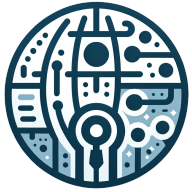3 Best Practices for Maintaining Accurate and Up-to-Date Labor Relations Documentation
In the ever-evolving landscape of labor relations, maintaining accurate and up-to-date documentation is crucial for organizations. This article delves into best practices for streamlining HR documentation processes, drawing on insights from industry experts. From centralizing digital systems to implementing real-time workflows and narrative documentation, these strategies aim to enhance efficiency and compliance in labor relations management.
- Centralize Digital HR Documentation System
- Implement Real-Time Workflow Documentation
- Adopt Real-Time Narrative Documentation Practice
Centralize Digital HR Documentation System
At Holt Law, a best practice we've adopted for maintaining accurate and up-to-date labor relations documentation is the consistent use of a centralized, secure digital HR documentation system with version control and access permissions. This goes beyond simply digitizing files. It ensures all critical records, including performance reviews, disciplinary actions, leave requests, policy acknowledgments, and training completions, are stored in a single, searchable, and secure location.
This approach has significantly strengthened our compliance posture and reduced legal risk. Having immediate access to accurate, timestamped documentation is crucial when addressing claims of wrongful termination, discrimination, or wage and hour violations. It allows us to provide clear, consistent evidence of policy enforcement and adherence to labor laws. This often helps resolve issues before they escalate into litigation. It also streamlines our internal processes, improving HR efficiency and decision-making.
Our top tip: train your managers and supervisors on the importance of timely, objective, and accurate documentation. They are on the front lines and play a key role in ensuring compliance. Equip them with the tools and understanding to document what happened, what was said, and what was decided, factually and without bias. This simple practice makes all the difference in building records that are not only compliant but legally defensible.

Implement Real-Time Workflow Documentation
One thing I've learned the hard way—especially during a chaotic HR restructuring project with a mid-stage SaaS startup—is that if documentation isn't updated during the conversation or decision-making process, it won't get updated at all. So, the best practice we've adopted at Spectup is simple: real-time documentation embedded into workflows. We use shared digital workspaces (like Notion or Confluence) where every conversation with legal or HR implications gets logged immediately, tagged, and time-stamped. No one waits to "write it up later." It sounds obvious, but you'd be surprised how often the delay creates gaps or opens up compliance risks.
The benefit? Zero ambiguity. When we're negotiating contracts or handling a sensitive exit, we don't waste time digging through email chains or half-filled Word docs—we know exactly where to look and what was agreed upon. It also builds internal trust; people know the records are transparent and accurate.
My tip? Don't separate documentation from action. Make it part of your daily rhythm, not a retrospective chore. And don't overcomplicate it with fancy tools—consistency beats sophistication every time.

Adopt Real-Time Narrative Documentation Practice
The most transformative documentation practice I've implemented in my Direct Primary Care practice is what I call "real-time narrative documentation"—immediately recording not just what happened, but the context and reasoning behind every staffing decision, policy change, and employee interaction. In healthcare, where staff turnover can disrupt patient care continuity, maintaining detailed records of training completions, performance discussions, and role transitions ensures seamless care delivery even when team members change.
I learned this lesson when a key nurse left unexpectedly, and her replacement struggled because we had no documentation of her patient relationship insights or workflow preferences. Now I document the "why" behind every HR decision, creating institutional memory that protects both employees and patients.
My tip: treat HR documentation like patient charts—comprehensive, contemporaneous, and focused on outcomes. When you document with the same rigor you apply to patient care, you create accountability systems that strengthen your entire organization. Strong teams deliver better patient experiences, and strong documentation builds strong teams. That's how care is brought back to patients.


